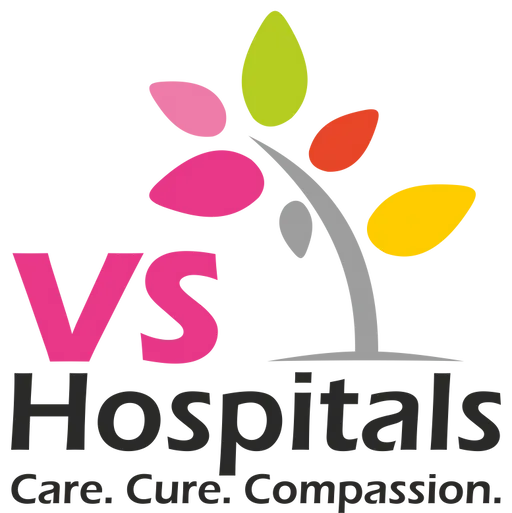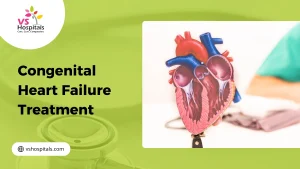Pediatric arrhythmias treatment is crucial for managing irregular heart rhythms in children, ensuring they lead healthy, active lives. Arrhythmias can affect heart function, causing discomfort and health risks if untreated. Thankfully, advanced pediatric arrhythmias treatment options at VS Hospitals—ranging from medication to minimally invasive procedures—provide safe, effective solutions. Early diagnosis and tailored treatments help improve the quality of life for children with arrhythmias, allowing them to thrive and achieve optimal heart health.
What is Pediatric Arrhythmia?
Pediatric arrhythmia is a condition where a child’s heart beats irregularly, either too fast, too slow, or inconsistently. This irregular rhythm can disrupt blood flow, affecting oxygen delivery throughout the body. While some arrhythmias are harmless, others require pediatric arrhythmias treatment to prevent complications. Common types of pediatric arrhythmia include:
- Tachycardia: Fast heart rate that may affect heart function.
- Bradycardia: Slow heart rate, sometimes a sign of underlying issues.
- Premature Atrial Contractions (PACs): Extra beats in the upper chambers, usually benign.
Identifying and managing pediatric arrhythmias early with specialized treatment can prevent long-term health risks and improve quality of life.
How Common is Childhood Arrhythmia?
Childhood arrhythmia, or irregular heart rhythms in children, is more common than often assumed, affecting many young lives each year. Pediatric arrhythmias treatment is essential, as untreated arrhythmias can lead to further complications. Early detection and treatment can help children live healthy, active lives.
- Prevalence: Millions of children worldwide experience arrhythmias, ranging from minor cases to severe conditions that require immediate intervention.
- Variety of Cases: Some arrhythmias are harmless, while others need careful monitoring and treatment, such as medications or even procedures.
With advances in pediatric arrhythmias treatment, families can find effective solutions and ongoing care for these conditions.
Types of Arrhythmias in Infants and Children
Pediatric arrhythmias treatment varies based on the specific type of irregular heartbeat a child may experience. Each type affects the heart differently, requiring a tailored approach to ensure the best outcome. Common types of arrhythmias in infants and children include:
- Tachycardia – A rapid heartbeat that may need monitoring or medication.
- Bradycardia – A slower-than-normal heartbeat, sometimes treated if it impacts overall health.
- Premature Atrial Contractions (PACs) – Extra beats originating in the heart’s upper chambers, generally harmless but monitored.
- Premature Ventricular Contractions (PVCs) – Extra beats from the lower chambers, often observed for potential issues.
Identifying the type of arrhythmia helps in selecting the appropriate pediatric arrhythmias treatment at VS Hospitals.
Symptoms of Pediatric Arrhythmia
Symptoms of pediatric arrhythmia can vary widely, depending on the type and severity of the heart rhythm disorder. Recognizing these signs early is essential for effective pediatric arrhythmias treatment, as untreated arrhythmias may affect a child’s quality of life. Parents and caregivers should watch for symptoms such as:
- Fast or slow heartbeat: Abnormal pulse rates may signal an arrhythmia.
- Dizziness or fainting: Sudden lightheadedness can be a warning sign.
- Chest discomfort or pain: Discomfort during activity might indicate an issue.
- Shortness of breath: Especially during exertion, this may be concerning.
- Fatigue and anxiety: These can accompany irregular heart rhythms.
Consulting a pediatric specialist helps determine if treatment is necessary for these symptoms.
Causes of Pediatric Arrhythmia
Pediatric arrhythmias can be caused by several factors, each affecting the heart’s rhythm differently. Understanding these causes helps in choosing the right pediatric arrhythmias treatment to ensure a healthy outcome. Common causes include:
- Genetics: A family history of arrhythmias or other heart conditions can increase a child’s risk.
- Congenital heart defects: Structural heart issues present at birth may disrupt normal heart rhythms.
- Certain medications: Specific medications that can cause arrhythmias include some antibiotics, asthma medications, and ADHD drugs.
- Other illnesses: Viral infections or electrolyte imbalances may also lead to irregular heartbeats in children.
Early identification of these causes at VS Hospitals can aid in effective treatment and better health outcomes.
Treatment of Pediatric Arrhythmia
Beta-blockers
Beta-blockers are commonly used for controlling fast heart rates by reducing the effects of adrenaline on the heart. They help maintain a steady rhythm, minimizing the risk of episodes. This treatment is effective for children needing consistent heart rate management with minimal side effects.
Calcium Channel Blockers
These medications work by relaxing the blood vessels and slowing the heart rate, especially beneficial for hypertension cardiac arrhythmias. They’re often prescribed for children who experience arrhythmias with high blood pressure, offering a reliable option for improved rhythm control.
Ablation
A minimally invasive procedure, ablation uses energy (usually radiofrequency) to destroy abnormal heart tissue that causes arrhythmias. By creating precise lesions, it helps restore normal rhythm and can be a long-lasting solution, often eliminating the need for ongoing medication.
Cardioversion
This technique uses a mild electric shock to reset the heart’s rhythm, usually applied externally. Cardioversion is effective for treating rapid arrhythmias and is often recommended in cases where medication alone hasn’t stabilized the heart rate.
Implanted Device
Devices like pacemakers or implantable cardioverter-defibrillators (ICDs) are implanted to regulate heartbeats. Pacemakers maintain a steady rhythm, while ICDs correct sudden irregular rhythms, offering a reliable and long-term solution for severe arrhythmia cases in children.
Maze Surgery
Maze surgery creates new pathways for electrical impulses in the heart, allowing for a controlled rhythm. This surgical option is typically reserved for severe cases where other treatments have not been effective, providing a structured and durable solution for complex arrhythmias.
Conclusion
Pediatric arrhythmias treatment at VS Hospitals offers children the opportunity for healthier lives by effectively addressing heart rhythm irregularities. With a range of advanced treatment options—like medication, ablation, and implanted devices—VS Hospitals tailors each approach to the child’s specific needs. Early intervention and accurate diagnosis are key to successful pediatric arrhythmias treatment, improving heart function and reducing health risks. Consult a specialist if symptoms arise; timely care makes a significant difference in outcomes for young patients.




